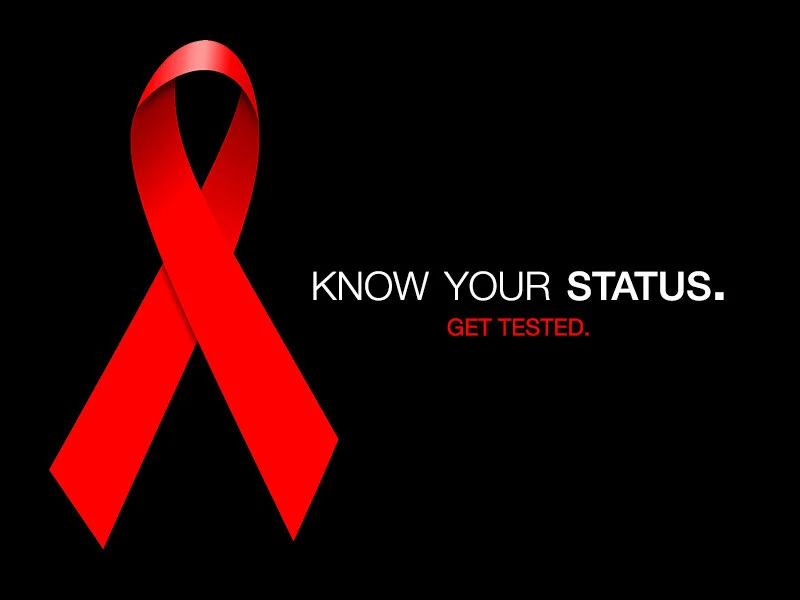By Joe Jones
World AIDS Day is celebrating its 30th anniversary on December 1st, and this year the theme is “Know your status”. UNAIDS says that although three in four people living with HIV know their status, “we still have miles to go”. The organization says it is key to ensure that those who are living with HIV, but are not yet aware of their status, are able to receive the care and treatment services they need.
UNAIDS places emphasis on testing as a method of prevention, saying “HIV testing is essential for expanding treatment and ensuring that all people living with HIV can lead healthy and productive lives.”
HIV tests are very accurate. There are currently three different types of HIV diagnostic tests: nucleic acid tests (NAT), antigen/antibody tests, and antibody tests. According to the CDC, NAT tests “look for the actual virus in the blood. This test is very expensive and is not routinely used for HIV screening unless the person recently had a high-risk exposure or a possible exposure with early symptoms of HIV infection.” Antigen/Antibody tests search for both the HIV antigen and the antibodies the body produces when it comes into contact with HIV. These tests are recommended testing in labs and are commonly used in the United States. There is also a rapid antigen/antibody test available. Antibody tests are used to detect not HIV itself, but rather he presence of the proteins that person’s body makes against HIV. Typically, rapid and home tests are antibody tests.
The gay and transgender community is disproportionally affected by HIV/AIDS. According to UNAIDS, the risk of acquiring of HIV is 27 times higher among men who have sex with men and 13 times higher for transgender women. The CDC says that gay and bisexual men accounted for 67% of all HIV diagnoses in the year 2016 with African American and bisexual men making up the majority of those cases with 38% of the diagnoses.
There are socioeconomic factors which account for why men who have sex with men are so disproportionality make up cases of HIV/AIDS such as “limited access to quality health care, lower income and educational levels, and higher rates of unemployment and incarceration, may place some gay and bisexual men at higher risk for HIV.”
Transgender women, despite only representing a small margin of society, account for a sizeable amount of HIV cases. According to the Human Rights Campaign, worldwide, 19.1% of transgender women are living with HIV, and in the US, 21.6% of transgender women are living with HIV, and three times for prevalent for black transgender women than white or Latina transgender women. A key factor that puts transgender women at risk for HIV is poverty and unemployment. “Transgender people who have been discriminated against in employment, or who have been unable to pursue advanced education because of bullying or harassment in school, are more likely to engage in survival sex work, which may put them at greater risk for contracting HIV and other sexually transmitted infections (STIs)” The HRC also identifies other key issues such as barriers to care, higher rates of sexual violence, and prevention education that is not tailored to the transgender community.
The CDC stresses the importance of regular testing for at-risk groups like men who have sex with men. “1 in 6 gay and bisexual men with HIV are unaware they have it. People who don’t know they have HIV cannot get the medicines they need to stay healthy and prevent transmitting HIV to their partners. Therefore, they may transmit the infection to others without knowing it.”
Despite the plethora of resources for prevention and treatment, the CDC identifies some factors which might prevent at risk populations from accessing those resources. “Homophobia, stigma, and discrimination may place gay and bisexual men at risk for multiple physical and mental health problems and may affect whether they seek and are able to obtain high-quality health services.”
One such resource for prevention is an antiretroviral medication called Truvada as a pre-exposure prophylaxis (PrEP). According to the manufacturer Gilead, “Truvada for a PrEP indication is not intended to replace other prevention tools such as condoms, but when taken as directed and used in combination with other prevention strategies, Truvada for a PrEP indication has demonstrated the potential to help reduce new HIV infections.” WHO, CDC and the U.S. Panel of the International Antiviral Society have all issued guidance’s recommending the public use PrEP as a means of preventive care. The CDC states that “Daily PrEP reduces the risk of getting HIV from sex by more than 90%. Among people who inject drugs, it reduces the risk by more than 70%. Your risk of getting HIV from sex can be even lower if you combine PrEP with condoms and other prevention methods.”

